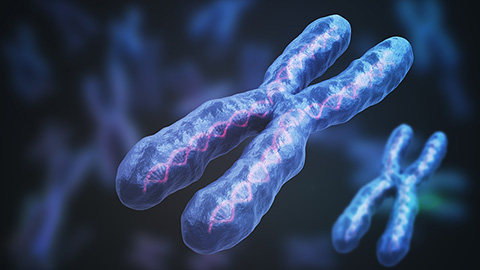Breathe deep — for August, it’s oxygen
We mark the 150th anniversary of Dimitri Mendeleev’s periodic table of chemical elements this year by highlighting elements important for life. So far, we’ve covered hydrogen, iron, sodium, potassium, chlorine, copper, calcium, phosphorus, carbon and nitrogen.
 Photosynthetic organisms capture the energy of sunlight and use it to produce organic molecules from the carbon dioxide and water they obtain from the environment. In the process, oxygen is released to the atmosphere.
Photosynthetic organisms capture the energy of sunlight and use it to produce organic molecules from the carbon dioxide and water they obtain from the environment. In the process, oxygen is released to the atmosphere.
For August, we selected oxygen, a highly reactive nonmetal with chemical symbol O and atomic number 8. Oxygen tends to fill its two unpaired electron shells by accepting electrons from other atoms via covalent bonding. It forms oxide compounds with a variety of elements, and its most common oxidation state is -2, but it also can exist in oxidation states of -1, +1 and +2.
After hydrogen and helium, oxygen is the third most abundant chemical element in the known universe. It is the second most abundant element in the Earth’s geosphere after iron and the most abundant element by mass in the Earth’s crust — at about 47% to 49%. Oxygen makes up about 89% of the world’s oceans, and diatomic oxygen gas constitutes about 20% of the Earth’s atmosphere — second only to nitrogen.
Oxygen is an important contributor to the evolution of all life on Earth. The earliest cells used components of the early Earth’s atmosphere — CO, CO2, N2 and CH4 — to synthesize organic compounds with the help of volcanic heat and lightning. Cells gradually developed pigments that capture visible light from the sun, acquired the ability to use H2O as the electron donor in photosynthetic reactions and started to eliminate O2 as waste. Under these conditions, the earth’s atmosphere grew richer in oxygen.
Aerobic organisms that live in habitats with a plentiful supply of O2 transfer electrons from fuel molecules to oxygen, deriving energy for preservation and growth. Their anaerobic counterparts have evolved in environments devoid of oxygen and transfer their electrons to nitrate, sulfate or carbon dioxide, forming dinitrogen, hydrogen sulfide and methane, respectively.
Aerobe cells obtain molecular oxygen from the surrounding medium by diffusion through their plasma membrane. However, oxygen is poorly soluble in the cytoplasm and extracellular milieu, and it cannot be diffused over long distances. Organisms have evolved water-soluble proteins that use transition metals such as iron and copper to store and transport oxygen in aqueous environments. Proteins such as hemoglobin and myoglobin use iron in the prosthetic group heme to bind oxygen reversibly and move it through tissues.
Cytochromes also use heme to transfer electrons in oxidation-reduction reactions during cellular respiration and photosynthesis. The constant movement of electrons inside the cell generates reactive oxygen species as byproducts, mostly superoxide ions and hydrogen peroxide. The immune cells of some vertebrates and certain plants use these reactive species to destroy invading microorganisms and pathogens.
Oxygen is a major constituent of the biological molecules in living beings. Chemical groups that contain oxygen include the hydroxyls, carbonyls and carboxyls in alcohols plus aldehydes, ketones, carboxylic acids and esters. These organic compounds are the building blocks for proteins, nucleic acids, carbohydrates and fats, the structural components of cells and tissues. Oxygen is also an important constituent of inorganic compounds important for life, such as water and phosphate.
A year of (bio)chemical elements
Read the whole series:
For January, it’s atomic No. 1
For February, it’s iron — atomic No. 26
For March, it’s a renal three-fer: sodium, potassium and chlorine
For April, it’s copper — atomic No. 29
For May, it’s in your bones: calcium and phosphorus
For June and July, it’s atomic Nos. 6 and 7
Breathe deep — for August, it’s oxygen
Manganese seldom travels alone
For October, magnesium helps the leaves stay green
Enjoy reading ASBMB Today?
Become a member to receive the print edition four times a year and the digital edition monthly.
Learn moreGet the latest from ASBMB Today
Enter your email address, and we’ll send you a weekly email with recent articles, interviews and more.
Latest in Science
Science highlights or most popular articles

Bacteriophage protein could make queso fresco safer
Researchers characterized the structure and function of PlyP100, a bacteriophage protein that shows promise as a food-safe antimicrobial for preventing Listeria monocytogenes growth in fresh cheeses.

Building the blueprint to block HIV
Wesley Sundquist will present his work on the HIV capsid and revolutionary drug, Lenacapavir, at the ASBMB Annual Meeting, March 7–10, in Maryland.

Gut microbes hijack cancer pathway in high-fat diets
Researchers at the Feinstein Institutes for Medical Research found that a high-fat diet increases ammonia-producing bacteria in the gut microbiome of mice, which in turn disrupts TGF-β signaling and promotes colorectal cancer.

Mapping fentanyl’s cellular footprint
Using a new imaging method, researchers at State University of New York at Buffalo traced fentanyl’s effects inside brain immune cells, revealing how the drug alters lipid droplets, pointing to new paths for addiction diagnostics.

Designing life’s building blocks with AI
Tanja Kortemme, a professor at the University of California, San Francisco, will discuss her research using computational biology to engineer proteins at the 2026 ASBMB Annual Meeting.

Cholesterol as a novel biomarker for Fragile X syndrome
Researchers in Quebec identified lower levels of a brain cholesterol metabolite, 24-hydroxycholesterol, in patients with fragile X syndrome, a finding that could provide a simple blood-based biomarker for understanding and managing the condition.

